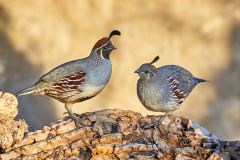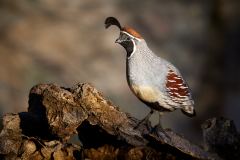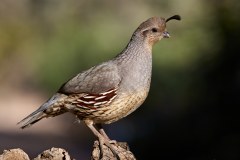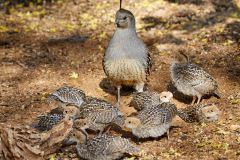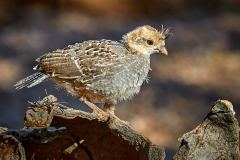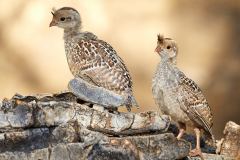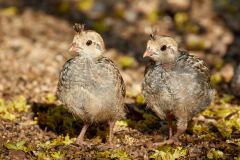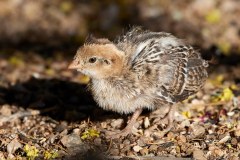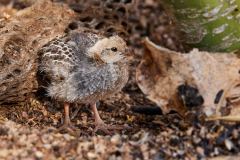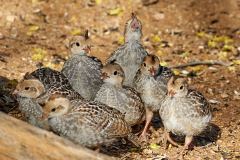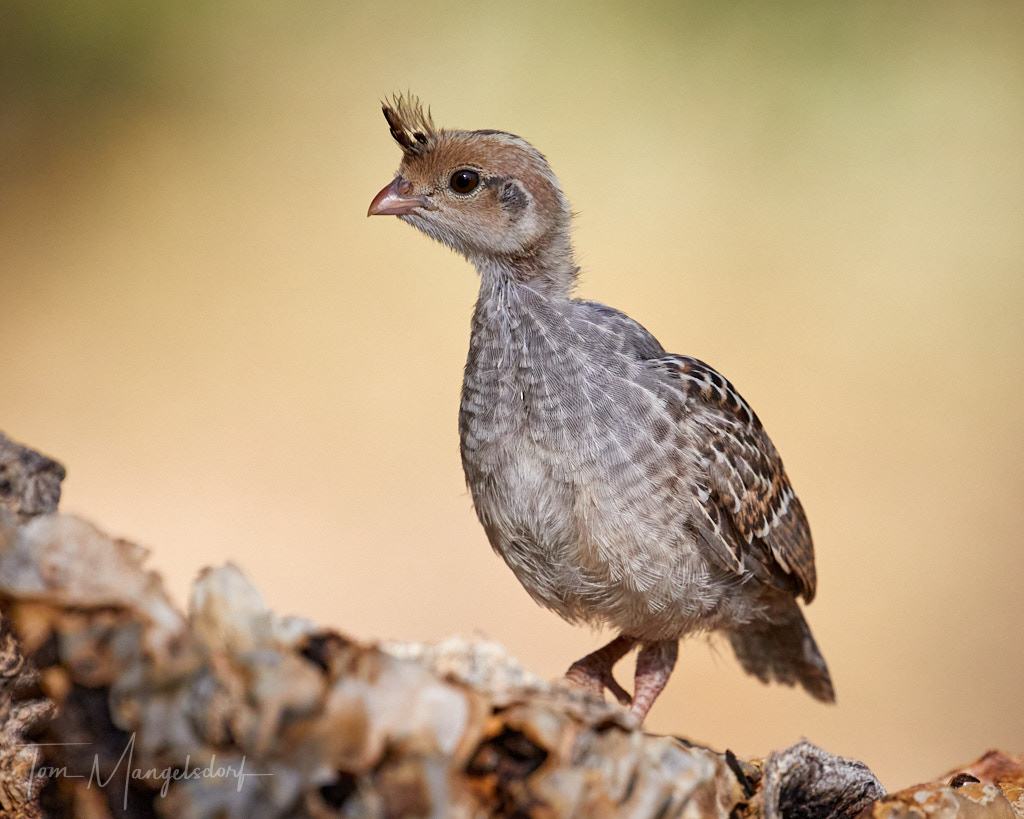
Distinctive, elegant, iconic – words you can easily apply to the adult Gambel’s Quail of the Sonoran Desert. Adorable, loveable, and just plain cute are words that describe their chicks. Springtime in the desert is when you’ll begin to see the male and female adults ushering their new family of chicks across roads, through washes and across your backyards.
Named in honor of William Gambel, a 19th-century naturalist and explorer of the southwest, Gambel’s Quail range throughout most of the southwestern states with an abundant presence here in Maricopa County. Identifying this species is easy – just look for their unique topknot. They will typically be spotted on the ground scurrying through the underbrush, although if startled, they will quickly take flight to avoid danger.
Quail nests are usually found in shaded areas among a few leaves and scraps of branches, or even in a planter box on your porch. Usually there are about 10-12 eggs in a typical nest. When the eggs hatch, all of the new chicks poke through their shells at the nearly same time ready to hit the ground running. The tiny chicks cluster around their parents who carefully watch over them as they quickly learn to eat and forage on their own.
But, like everything else in the desert, life for the little chicks can be hazardous. Predators like snakes, coyotes and birds of prey will quickly snatch wayward youngsters – one reason why these quail produce such large broods. Yet, despite the desert’s harsh environment, the Gambel’s Quail population has remained fairly stable for several decades. However, human development and continuing loss of habitat in addition to climate change remain persistent risks to their future.
So, as the spring days grow longer and the desert heat begins to return, keep an eye out for these beautiful avian families strutting though the desert. Oh, and if you’re planning to visit Hawaii’s big island, you just might spot a Gambel’s Quail on the slopes of the Mauna Kea volcano. They were released by the Hawaii Division of Fish and Game for several years during the mid-twentieth century.
Click on the first thumbnail to load the larger image with caption and click through the others in the gallery…
